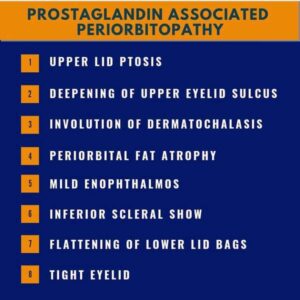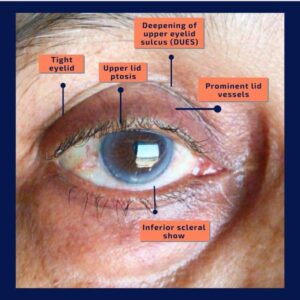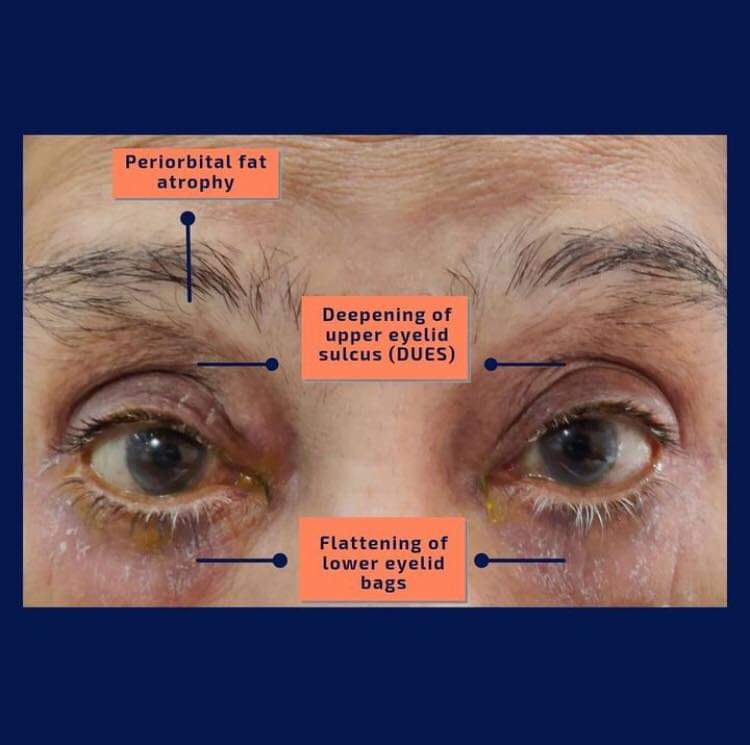Prostaglandin Associated Periorbitopathy(PAP)
PAP is the general term given to describe the constellation of eyelid and orbital changes that accompany the administration of topical prostaglandin analogue eye drops.
Diagnosis of Prostaglandin Associated Periorbitopathy:

➖The diagnosis of PAP is a clinical diagnosis made by a constellation of physical exam findings that occur after initiating topical prostaglandin analog therapy.
➖The diagnosis may be very difficult to make and likely has been missed in several cases as most prostaglandin analogs are prescribed for bilateral use and as such would produce symmetrical changes which are often more difficult to recognize.
➖Additionally, these changes occur relatively gradually and are usually found in elderly patients who may normally have some periorbital and orbital adipose volume depletion.
History of PAP
➖Many patients may not actually complain of any symptoms despite clearly having the clinical signs of PAP as the changes occur gradually and are often symmetric.
➖Some patients may complain of the onset of a droopy lid or their eyelid starting to get in the way of their vision when this was previously never an issue.
➖It may be noted that performing Goldman applanation becomes increasingly difficult on patients with PAP as their orbits seem increasingly sunken in.
➖Rarely, patients may complain of diplopia.
➖Most commonly, patients refer to such changes as “tired-appearing eyes.”
Physical examination of Prostaglandin Associated Periorbitopathy:

Several physical exam findings can be noted on patients with PAP.
➖The MRD1 can be decreased as compared to measurements prior to the initiation of therapy.
➖Hertel’s exophthalmometry can reveal a mild degree of enophthalmos or at least a relative decrease in values as compared to baseline.
➖MRD2 or a measurement of inferior scleral show may be increased as compared to baseline as well.
➖Finally, prism alternate cover test or Maddox rod testing can reveal a relative muscle deficit, most commonly a slight limitation in abduction.

Management of Prostaglandin Associated Periorbitopathy
Management of Prostaglandin Associated Periorbitopathy can usually be achieved by simple discontinuation of therapy.
Credit: www.eyewiki.aao.org
Photo credit: glaucomacharya.
Discover more from An Eye Care Blog
Subscribe to get the latest posts sent to your email.

You must be logged in to post a comment.